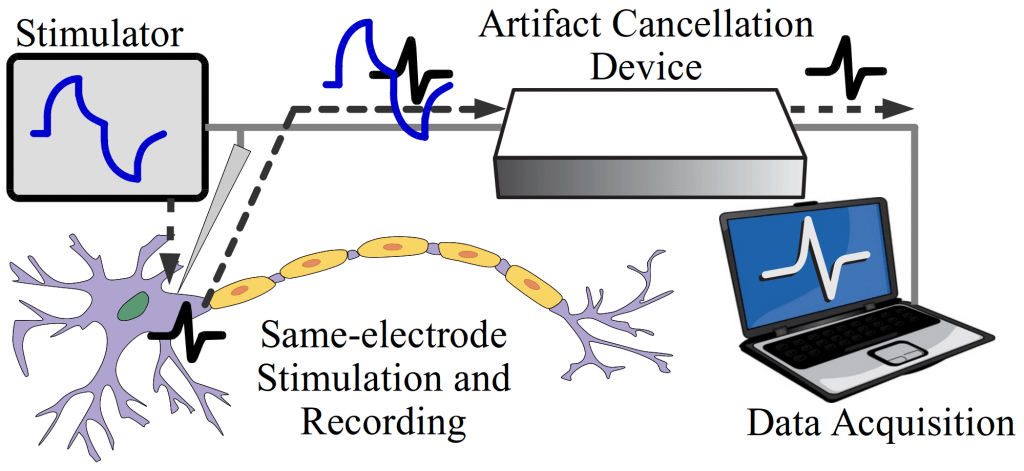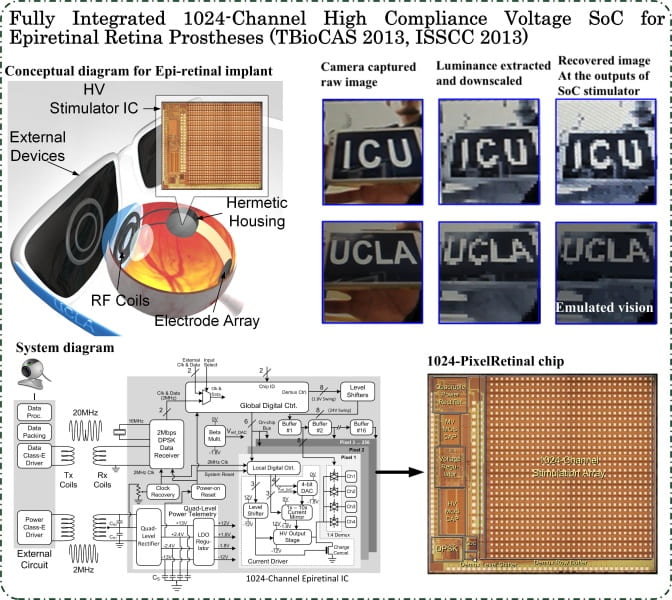Stimulation Artifact Cancellation
 Live Stimulation Artifact Cancellation
Live Stimulation Artifact Cancellation
Recovering neural responses from electrode recordings is fundamental for understanding the dynamics of neural networks. This effort is often obscured by stimulus artifacts in the recordings, which result from stimuli injected into the electrode-tissue interface. Stimulus artifacts, which can be orders of magnitude larger than the neural responses of interest, can mask short-latency evoked responses. Furthermore, simultaneous neural stimulation and recording on the same electrode generates artifacts with larger amplitudes compared to a separate electrode setup, which inevitably overwhelm the amplifier operation and cause unrecoverable neural signal loss. This paper proposes an end-to-end system combining hardware and software techniques for actively cancelling stimulus artifacts, avoiding amplifier saturation, and recovering neural responses during current-controlled in-vivo neural stimulation and recording. The proposed system is tested in-vitro under various stimulation settings by stimulating and recording on the same electrode with a superimposed pre-recorded neural signal. Experimental results show that neural responses can be recovered with minimal distortion even during stimulus artifacts that are several orders greater in magnitude.

Publication
“A Hybrid Hardware and Software Approach for Cancelling Stimulus Artifacts During Same-electrode Neural Stimulation and Recording,” Stanislav Culaclii, Brian Kim, Yi-Kai Lo, and Wentai Liu, accepted by EMBC 2016.


